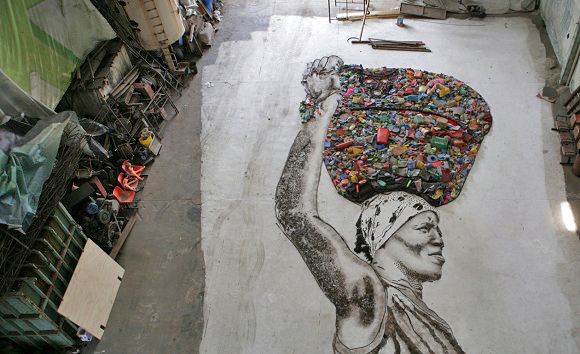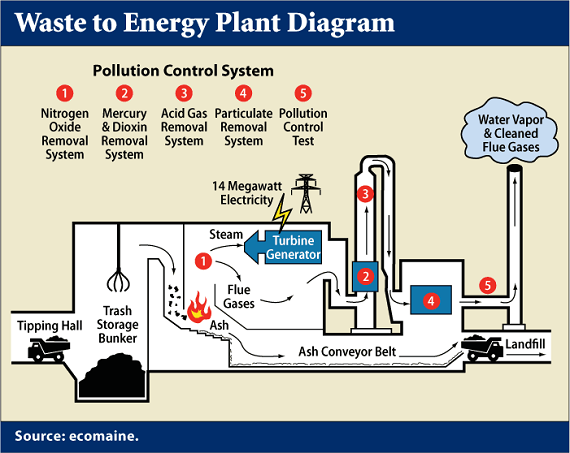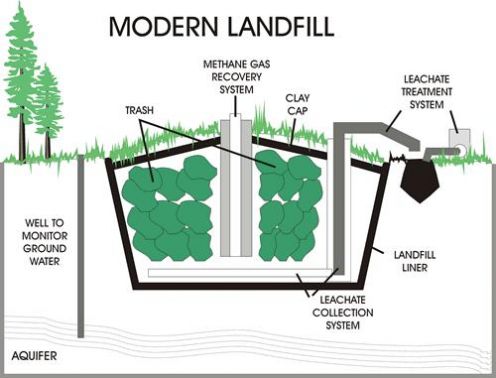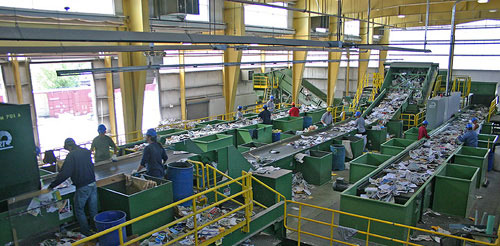
EPA says Americans generate about 251 million tons (228 million metric tons) of trash per year and this figure is growing. That is about 4.5 pounds of trash per head. This doesn’t even account for industrial waste.
So what do we know about our garbage, and what really happens to it when it leaves our house? If you ask your friends, they’ll say “Not much.”
Personally, I find waste management very interesting. Knowing a full cycle of materials is not only a fascinating study but a crucial connection we can all make with the stuff we use and discard every day. If we truly appreciate the so called embedded energy in everything we touch we’ll come away with a whole new appreciation of how much energy is actually consumed in making stuff and then getting rid of it.
Basically, there are designated places where our trash ends up: incinerators, landfills and recycling facilities. Based on where you live, different methods are used to dispose of it. As you can imagine, some are better than others.
Incinerators
Whenever trash goes to incinerators, a part of it comes back but in the form of electricity. Trash is sorted in order to remove the dangerous items that cannot be burned (i.e. batteries) and the rest is just put into a large incinerator.
According to National Waste and Recycling Association – these so called “Waste-to-energy facilities” incinerate trash in power plants equipped with modern pollution control equipment to clean emissions.
About 10 percent of America’s garbage is disposed in these plants. According to the Integrated Waste Services Association, as of 2008, America’s solid waste industry operated 87 waste-to-energy facilities that generated more than 2,700 megawatts of electricity, enough to power 1.7 million homes.
Rockville, Maryland, is an example of a community where half of the trash collected ends up incinerated, adding to the energy that the city receives. Ash is usually taken to landfills.
Landfills
This is the most common place where trash ends up after leaving your home. A landfill is basically a huge pit that is meant to hold the trash under the ground while it will decompose. In order to not contaminate the ground, these landfills are lined with gravel, plastic and clay.
The problem with the landfill is that it does eventually end up being too small for how much trash it needs to hold. This is a really common problem in most cities around the world. The solution may seem simple but it is not. The landfill needs to be covered with many soil layers and then landscaped when it is full.
However, soil and water need to be monitored for tens of years so that the environment remains safe. Also, we do eventually end up with no space for a new landfill to be created. There are too many around the world that are overflowing with health hazards.
If you live in San Jose, feel free to check out a video of Newby Island Landfill and Recycling facility that I personally visited and filmed. It is a place worth of excursion.
Recycling Facilities
Nowadays, there are many companies that specialize in recycling trash in order to protect the environment. They’ve erected state of the art sorting and recycling where they extract as much embedded energy as they can and repurpose it for future products or energy.
Next time you are holding a bottle in your hand and doubting whether to find a recycling bin or just toss it in trash consider this: Recycling not only cuts the waste that ends up in our landfills, it creates other benefits. For example, recycling allows us to conserve vital natural resources. It reduces air and water pollution and cuts greenhouse gas emission, which contribute to climate change. There is a direct, tangible link between you and your product in your hand!
Conclusion
In general, today’s technology is increasingly allowing us to reuse or repurpose our trash. A modern facility will burn trash to generate energy and use gas from the decomposition of trash in landfills as a “green” energy source.
When you have options of waste disposal services please investigate their operations and choose wisely. Play our part in the community and educate others. After all, proper waste disposal can help us to live a healthier and conserve resources for years ahead.
Article written and offered courtesy of Instant Waste – waste management and disposal company in Western Australia.



 Labels May Not Lie, But Do they Speak the Full Truth?
Labels May Not Lie, But Do they Speak the Full Truth? Frank Schiavo Solar Home’s Legacy to San Jose
Frank Schiavo Solar Home’s Legacy to San Jose Why Your Water Bill Can Go from $63 to $128 in the Next Few Years
Why Your Water Bill Can Go from $63 to $128 in the Next Few Years